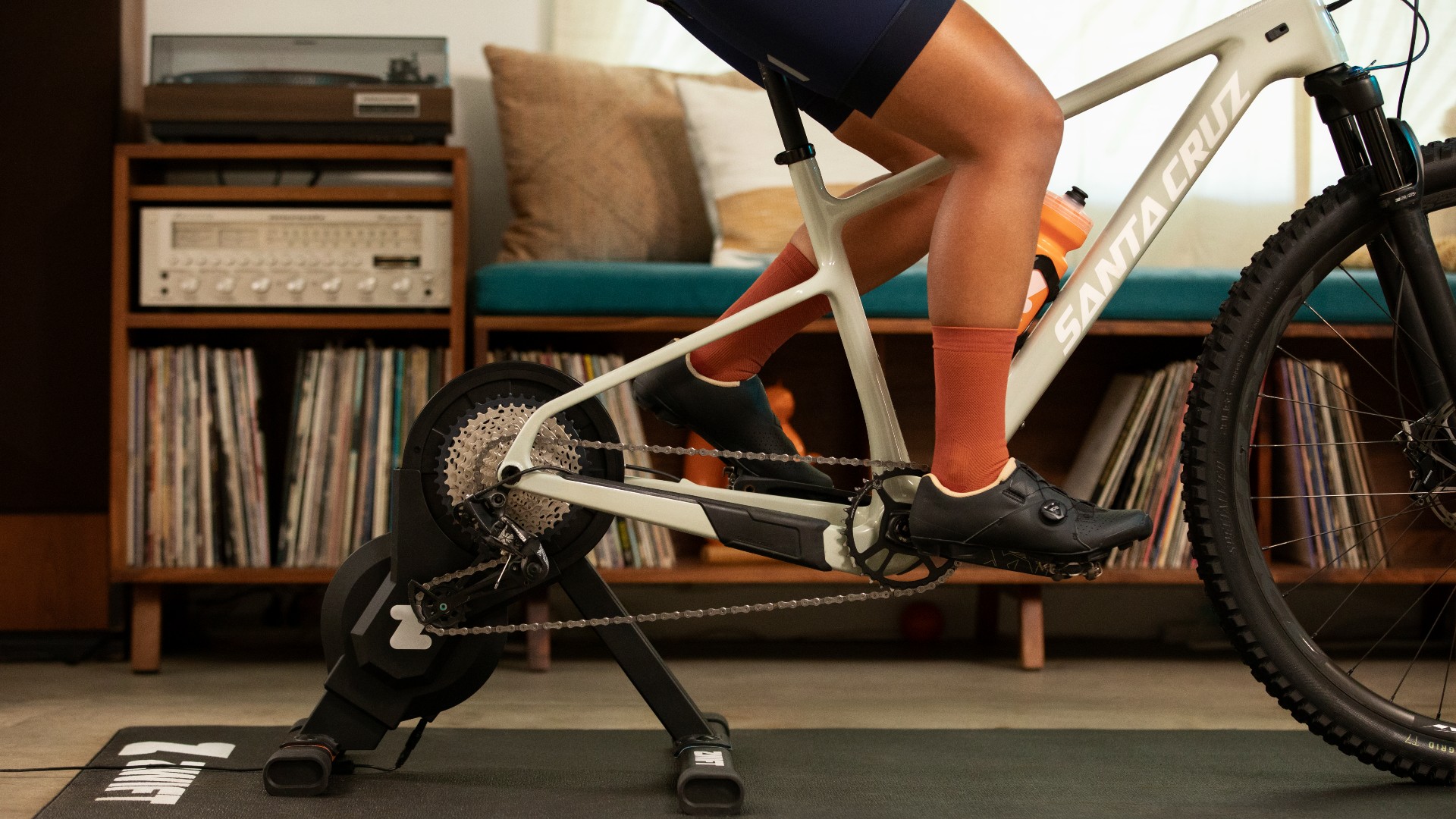Zwift’s First Turbo Trainer Is Great For Beginners
The new Zwift Hub turbo trainer makes setting up indoor cycling on Zwift simpler

Indoor cycling giant Zwift has launched its own turbo trainer, the Zwift Hub, which arrives with a clear purpose – to make setting up and using Zwift easier. The Zwift Hub will cost £449/$499, a competitive price for a direct drive (wheel-off) trainer, and will be available from 3rd October on Zwift’s website.
The Zwift Hub is based on the JetBlack Volt and looks set to be one of the best turbo trainers when it lands on the market, purely because it’s been designed to make the set-up process easier.
While experienced cyclists will be dab hands at popping the back wheel off their bike and installing it on a turbo trainer, many of us are less familiar with the mechanics of the process, and when terms like “cassette” and “axle adapters” start cropping up it’s easy to decide that maybe you don’t want to ride your bike indoors after all (although our how to get started with Zwift guide can help).
With the Zwift Hub, you pick the cassette you need for your bike while buying it, with video guides to help you do that on the website, and the Zwift Hub then arrives with the cassette already installed for you.
Working out which axle adapter your bike needs is also not always clear, so Zwift’s adapters are packaged on cards that have instructions on how to identify which one you need and install it in place.

Despite not cycling outdoors, aside from the occasional commute, I love cycling on Zwift and have done so for years without knowing what cassettes or adapters are, because someone once set up my turbo for me and I haven’t touched it since. Hopefully the assistance you get with setting up the Zwift Hub will open up indoor cycling to more beginners like me. It even has colour-coded feet so you can be sure you’ve attached them to the right leg of the turbo trainer.
The Zwift Hub will also connect to other indoor cycling platforms such as Wahoo Systm or TrainerRoad, and while it is beginner-friendly, it has the specs to satisfy experienced cyclists too. The maximum resistance is 1,800 watts, and the power measurements are accurate to within 2.5%. The maximum gradient it can simulate is 16% and a forthcoming update will allow the Zwift Hub to calibrate itself.
Get the Coach Newsletter
Sign up for workout ideas, training advice, reviews of the latest gear and more.
Zwift has been expected to launch its own smart exercise bike for some time, but that plan has been shelved for now. Instead, the Zwift Hub is arriving to make it simpler for people to get into indoor cycling on the platform.

Nick Harris-Fry is a journalist who has been covering health and fitness since 2015. Nick is an avid runner, covering 70-110km a week, which gives him ample opportunity to test a wide range of running shoes and running gear. He is also the chief tester for fitness trackers and running watches, treadmills and exercise bikes, and workout headphones.
